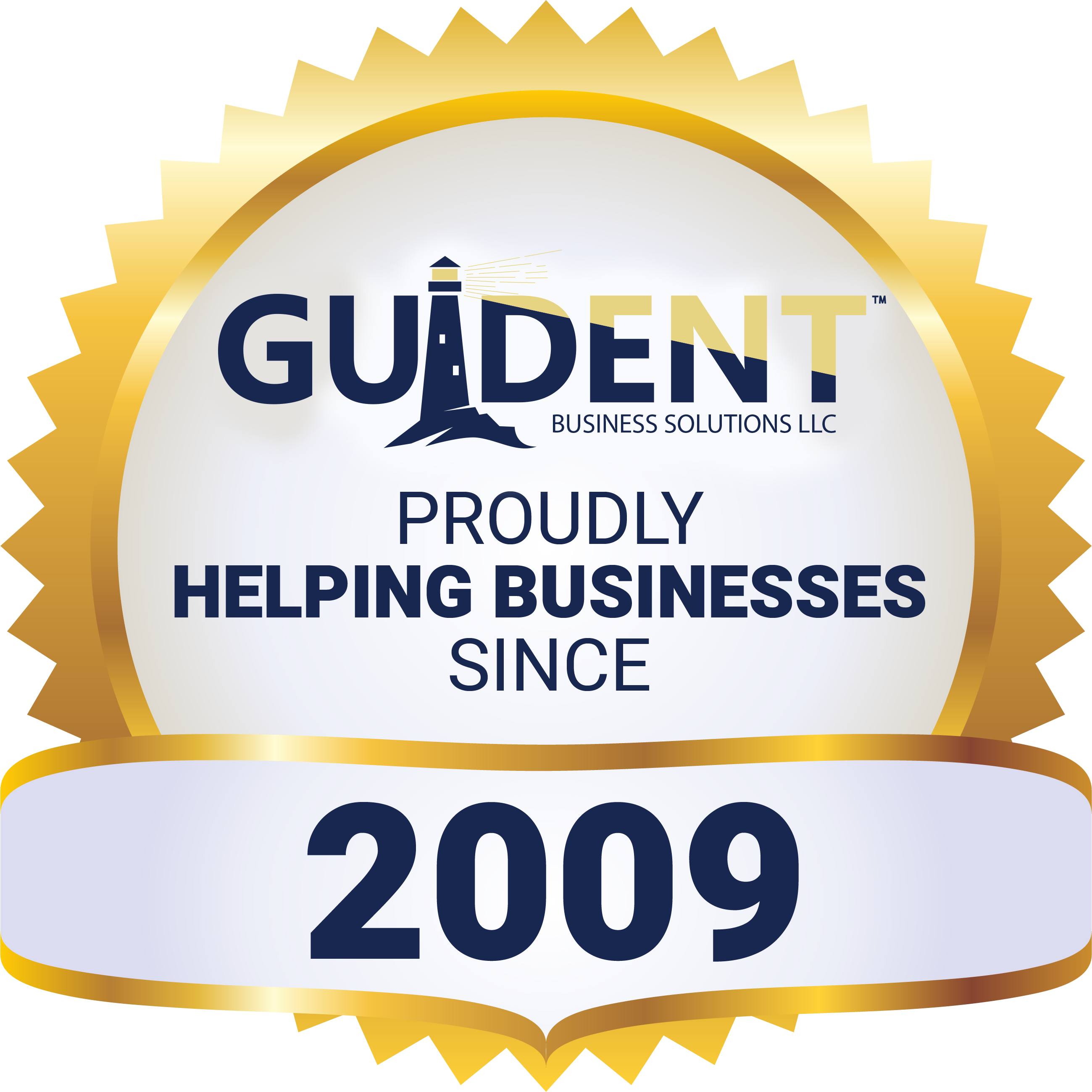Guident Newsletter – September 2018 – Issue 28
Ten Good Old Rules!
In my office, I have a small piece of paper with “Ten Good Old Rules” on it. Back in 2001, I found these ten rules in the fall issue of a business magazine named, Business Edge. I have been carrying these rules around for going on sixteen years so I thought it would be a good topic for this newsletter. Here they are in the order they appeared in the 2001 issue;
- Control expenses
- Emphasize cash flow over growth
- Conserve cash reserves
- Eliminate or reduce unprofitable product or service lines
- Maximize efficiencies in the usage of energy, materials, and labor
- Reduce inventories
- Reduce or eliminate the number of free services
- Take advantage of lower prices for essential goods and services
- Watch for opportunities to acquire a competitors’ business if offered at a bargain rate
- Don’t get emotional; it’s just business
Let’s break them down by the numbers. #1 Control expenses by creating an annual operating budget and analyzing each month using the actual versus budget function from your accounting software you will be able to see what expenses are on target and which ones need attention. #2 Emphasize cash flow overgrowth; often I see businesses with strategies to grow for the sake of growth eventually becoming challenged to reach a reasonable break-even point as a result of too high of fixed costs. #3 Conserve cash reserves; many of the business owners I see want to spend their cash reserves as soon as they are realized. It seems they would rather rely on their line-of-credit rather than build up cash reserves. #4 Eliminate or reduce unprofitable product or service line; many of the organizations I see do not have accurate financials, so they have a tough time identifying if a product or service line is profitable or not, having accurate financial statements just makes good business sense. #5 Maximize efficiencies in the usage of energy, materials, and labor; business owners I see, more often than not, know what they have spent on materials and can feel if labor is within an acceptable tolerance, but they don’t seem to have energy usage on their radar. Using an annual operating budget can help identify what prior years energy costs have been and what is being spent in this fiscal year. #6 Reduce inventories; when I meet with owners for the first time, our conversation eventually turns to cash flow issues. I explain that cash flow is causing a pain in their wallet, but that is a referred pain. The actual pain point from poor cash flow is usually found in one or more of these three areas. Too much inventory, too many uncollected account receivables, and poor decisions when it comes to spending the cash they do have. #7 Reduce or eliminate the number of free services; free services can sneak up on a business and cause cash flow issues. Another form of “free” is “barter.” Bartering can also have an adverse effect on cash flow. #8 Take advantage of lower prices for essential goods and services; many of the organizations I consult with spend millions of dollars for materials and other high dollar items without any one person responsible for those purchases. As the owner of your business does it make sense to have one person accountable for spending millions of dollars of your money annually? In many cases several people are charged with “purchasing,” and the business’s cost structure and inventories levels suffer. #9 Watch for opportunities to acquire a competitors’ business if offered at a bargain rate; in my career, I have bought several businesses, and most often the owner was not looking to sell, but when approached they were open to a serious discussion. The merger and acquisition (M&A) strategy was to eliminate a smaller competitor who was irresponsible in their pricing strategy or if their business had a synergy which helped us achieve our overall growth strategy. These three main matrixes were used in the M&A decision process; ROE, ROIC, and RONA. More on these measurements in future newsletters. #10 Don’t get emotional; it’s just business, of the ten rules this is the most difficult to obey! Can you hear yourself saying; “Don’t get emotional you say, emotions and passion are what gets me through the day when cash flow is non-existent!” Not getting emotional is good advice, but can be the most challenging to accomplish.

